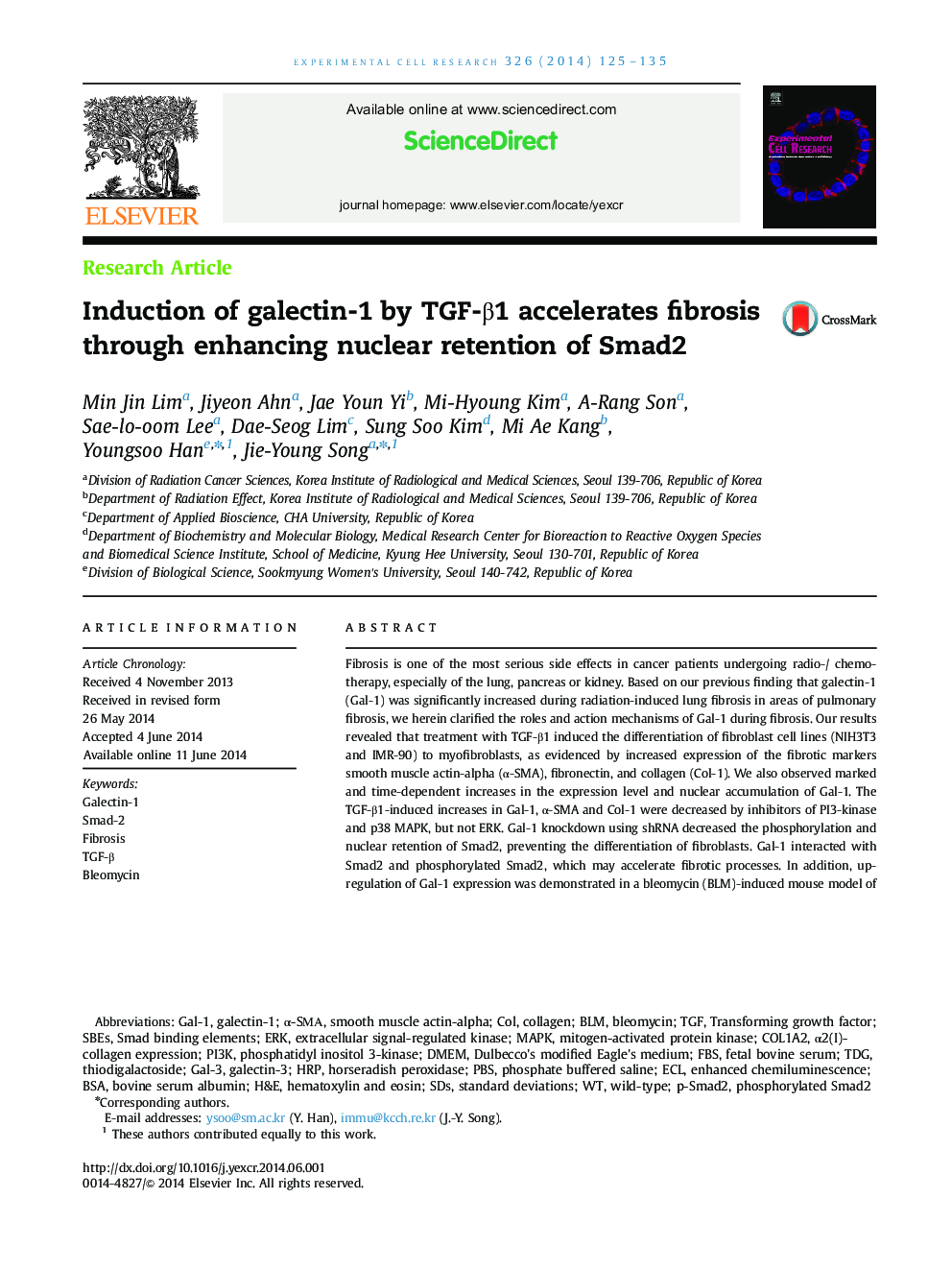| Article ID | Journal | Published Year | Pages | File Type |
|---|---|---|---|---|
| 10904018 | Experimental Cell Research | 2014 | 11 Pages |
Abstract
Fibrosis is one of the most serious side effects in cancer patients undergoing radio-/ chemo-therapy, especially of the lung, pancreas or kidney. Based on our previous finding that galectin-1 (Gal-1) was significantly increased during radiation-induced lung fibrosis in areas of pulmonary fibrosis, we herein clarified the roles and action mechanisms of Gal-1 during fibrosis. Our results revealed that treatment with TGF-β1 induced the differentiation of fibroblast cell lines (NIH3T3 and IMR-90) to myofibroblasts, as evidenced by increased expression of the fibrotic markers smooth muscle actin-alpha (α-SMA), fibronectin, and collagen (Col-1). We also observed marked and time-dependent increases in the expression level and nuclear accumulation of Gal-1. The TGF-β1-induced increases in Gal-1, α-SMA and Col-1 were decreased by inhibitors of PI3-kinase and p38 MAPK, but not ERK. Gal-1 knockdown using shRNA decreased the phosphorylation and nuclear retention of Smad2, preventing the differentiation of fibroblasts. Gal-1 interacted with Smad2 and phosphorylated Smad2, which may accelerate fibrotic processes. In addition, up-regulation of Gal-1 expression was demonstrated in a bleomycin (BLM)-induced mouse model of lung fibrosis in vivo. Together, our results indicate that Gal-1 may promote the TGF-β1-induced differentiation of fibroblasts by sustaining nuclear localization of Smad2, and could be a potential target for the treatment of pulmonary fibrotic diseases.
Keywords
ERKTGF-βp-Smad2TDGCol1a2TGFECLBLMPI3KHRPFBSSDSPBSDMEMBSADulbecco׳s modified Eagle׳s mediumH&EMAPKbovine serum albuminstandard deviationsBleomycinenhanced chemiluminescencetransforming growth factorfetal bovine serumPhosphate buffered salinePhosphatidyl Inositol 3-kinaseFibrosiswild-typeHematoxylin and EosinHorseradish peroxidasemitogen-activated protein kinaseCollagencolextracellular signal-regulated kinaseGal-3Gal-1Galectin-1Galectin-3
Related Topics
Life Sciences
Biochemistry, Genetics and Molecular Biology
Cancer Research
Authors
Min Jin Lim, Jiyeon Ahn, Jae Youn Yi, Mi-Hyoung Kim, A-Rang Son, Sae-lo-oom Lee, Dae-Seog Lim, Sung Soo Kim, Mi Ae Kang, Youngsoo Han, Jie-Young Song,
